If you had a computer in to 90’s, you probably also had at least one CD with hundreds, maybe even thousands, of shareware games on it. Sure, these types of CD’s are still around, but back in the day the games on these CD’s were pretty much the only commercial indie games around. Buried between hundreds of chess, mahjong, and tic-tac-toe clones, these obscure games are truly hidden gems.
Coming from an era where the term ‘indie game’ didn’t even exist and the expected method of payment consisted of sending money in the mail to a P.O. Box and hoping the developer 1) still lived in that area and 2) bothered to send you the password to unlock the full game, many of these gaming relics have been buried deep beneath the sands of time, lost and forgotten. God of Thunder is one such game, now free on Steam, and it contains all the cheesy humor, rad tunes, silly sound effects, and somewhat clunky combat you might expect from a 1994 shareware game alongside some design decisions which feel surprisingly ahead of their time.
This is a top-down action adventure game in the style of something like Zelda, though it’s far more linear. Thor’s quest to defeat Loki is divided into three Parts and you can choose to play through them in any order, or even swap between them, since the game starts you off with any upgrades which would have been found in earlier Parts. That said, the difficulty and some largely inconsequential story elements are designed around playing through all three one at a time in sequence.

On the surface, there are a lot of common shareware traits to be found in God of Thunder. Much of your time is spent tracking down keys to open doors (well, blocks at any rate) and when you’re not tracking down keys you’re probably tracking down jewels to open money gates. Thor has a large health bar, but he lacks anything in the way of invincibility frames, meaning his health starts to plummet the moment any sort of enemy or hazard touches him. Good music, questionable art, and a paper-thin story are all in line with many other games from this era. There’s even treasure which does nothing beyond giving you points so useless that not coming in first on the high score list might be an impossible challenge. With all of this, what is even left to set God of Thunder apart?
To begin with, God of Thunder is astonishingly ahead of its time when it comes to saving and checkpointing. Thor can be quite fragile at times, but dying only sets you back to the start of the current screen. Though you only get one save slot per profile, you are free to save at any time. Grinding for health and jewels is likewise discouraged. Consumables are plentiful and NPC’s are scattered about which sell healing apples for a handful of jewels. An early healing spell further hinders any chance of being softlocked and angel NPC’s sent by Odin can be used to fully restore your health or mana for free as much as you want. As for the money gates, there are always enough jewels hidden near them to unlock them so you never need to worry about farming monsters for money unless you really, really like apples.
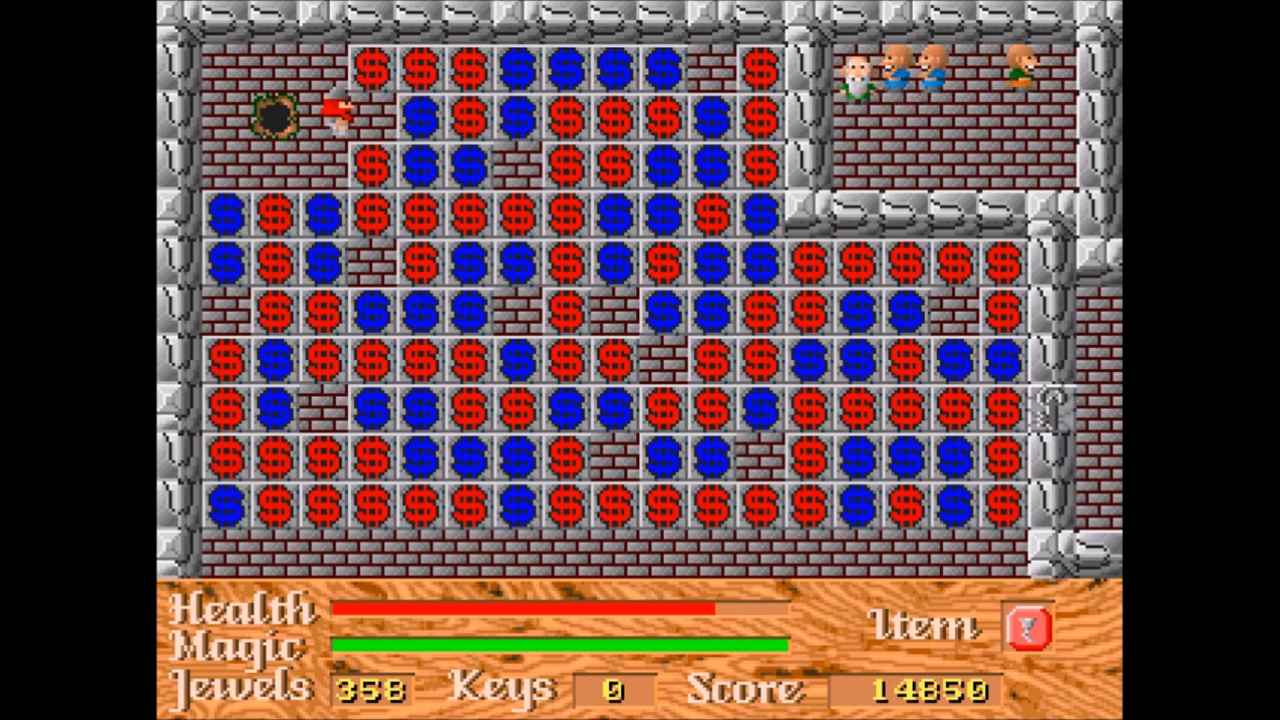
Thor’s magical returning hammer is the main feature this time around. Pressing the attack button sends the hammer out in a straight line until it hits an object or creature and then the hammer arcs its way back to Thor. It’s a powerful and flexible attack, but missing your target can leave you vulnerable for quite a while as you wait for the hammer to return. Fights against melee enemies can be tense, especially if you miss an attack, and finding ways to hit enemies by arcing your hammer while putting yourself in minimal danger is fun. The first boss fight is probably the best one because you can only harm it by hitting it on the back of its head while dodging attacks in front of it.
On the other hand, a large number of enemies have ranged attacks, including guards, archers, birds, and skunks and this is where the combat system falls apart. Many ranged attackers take multiple hits to kill and their projectiles move ridiculously fast, so fast that if Thor is lined up with them at any point he is probably going to lose a decent chunk of health. Spells can help to some degree, but the only spells you get in Part 1 are a healing spell and a strong close-range ability.
The combat in God of Thunder is generally clunky, mostly because of just how many enemies are ranged, but this isn’t as much of a detriment as you might expect. You see, God of Thunder is first and foremost an action puzzle game in disguise. Even though plenty of screens have enemies, most of your time is spent hitting switches, pushing blocks, and rolling boulders.
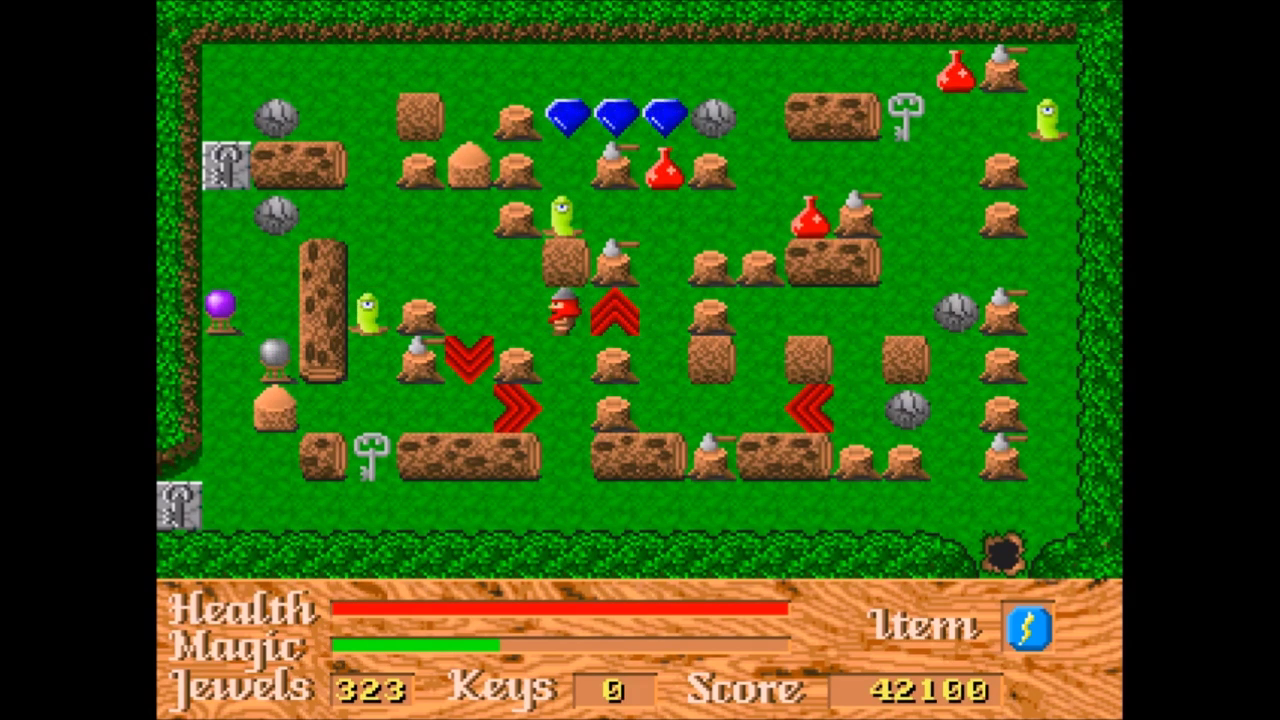
Thor’s hammer frequently plays a crucial role in these puzzles because it can still be stopped by walls on the way back. For example, puzzles which involve raising and lowering barriers are common and in some of these you may need to throw the hammer across the screen, deliberately ‘catch’ it behind a wall while Thor is in a specific location, and move around to make the hammer hit switches so Thor can progress. Some enemies can also interact with switches and, since Thor can be killed by standing on a barrier tile when it rises up, finding a way to kill these enemies or adjust their paths is a common goal.
An immobile, invincible green worm is the most notable enemy in all of God of Thunder. This creature is almost identical to the Medusa enemies in Adventures of Lolo. Worms immediately shoot instant-death bullets at Thor if he is cardinally aligned with them and the bullets are so fast that Thor can barely dodge them while on the opposite side of the screen. Thus, the primary objective of most block pushing puzzles is to find a way to shield yourself from their attacks in order to pick up a key or reach the exit. You can expect to encounter these creatures frequently, at least a third of Part 2 is likely devoted to puzzles involving them, and the solutions for overcoming them are often clever.
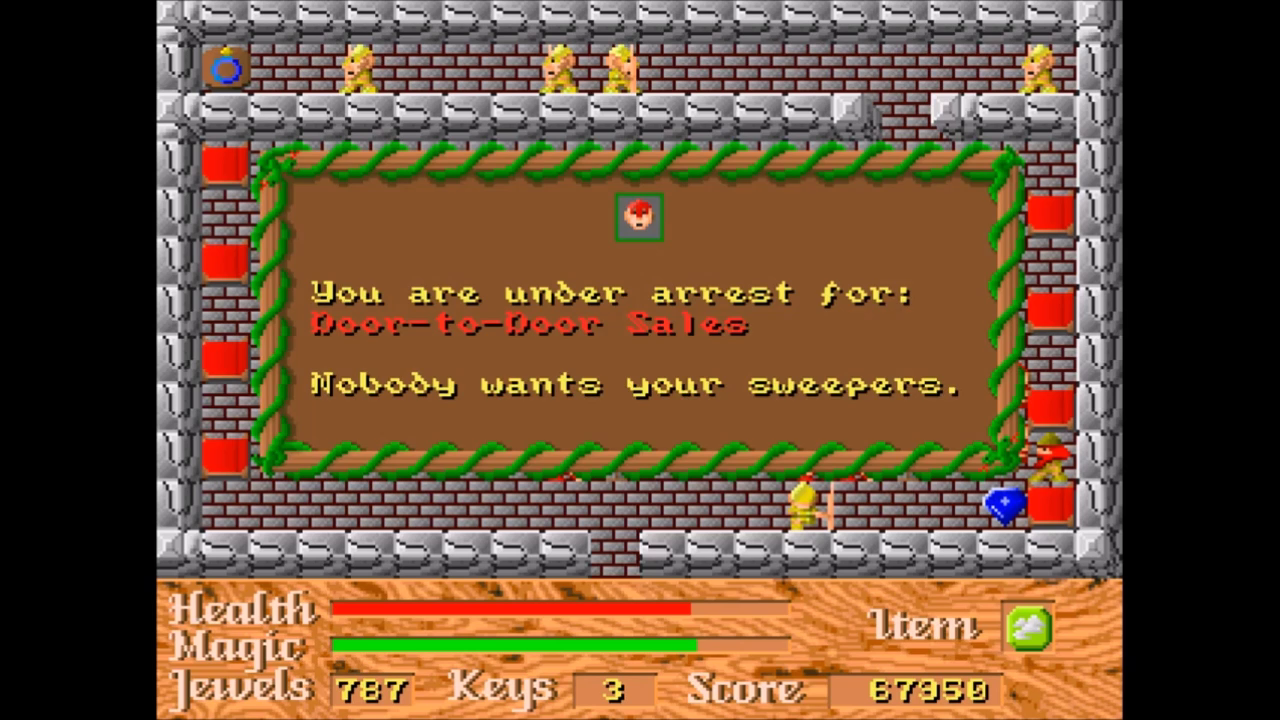
For better and worse, this game’s engine makes its puzzles oddly flexible. To the best of my knowledge, every puzzle has a solution which requires little to nothing in the way of reflexes. However, you can often bypass obstacles or arrive at alternate solutions by being fast enough in many puzzles with timing elements. Boulders present a particularly interesting set of possibilities. These rocks will keep rolling in a direction once pushed until they hit something, which sounds like a pretty standard puzzle element.
The catch here is that Thor can move quickly enough to catch up to rocks and push them in new directions mid-roll; you can carefully align blocks to guide a rock or you can just rely on reflexes and good timing to skip ahead a few steps. Puzzles involving keys are even more flexible as you can try to find a solution for gathering all the keys in one go or you can grab one or two keys and then screen transition to keep the keys while resetting the rest of the puzzle.
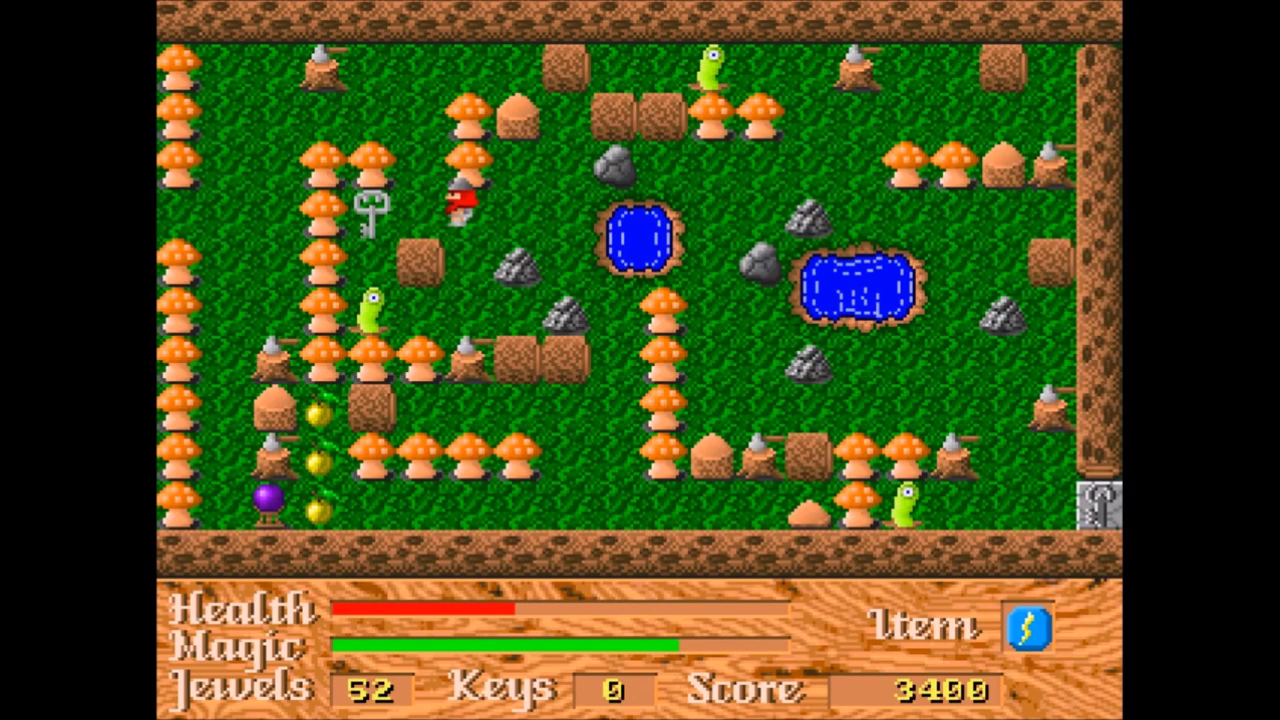
Freeform movement is one area in which God of Thunder is a little too flexible for its own good. Thor isn’t confined to tile-based movement and he can walk on diagonals as much as he wants, but the puzzles themselves can sometimes suffer for this. Since movement is so free, it’s easy to push blocks a few pixels too far, trapping them against a wall and forcing you to redo the screen.
There’s also an interesting oversight involving keys guarded by worms. You see, it seems that the hitbox for keys is slightly larger than that of a worm’s line of sight, so by inching up on a key very carefully it’s possible for Thor to grab it without triggering a death ray, completely circumventing the related puzzle.
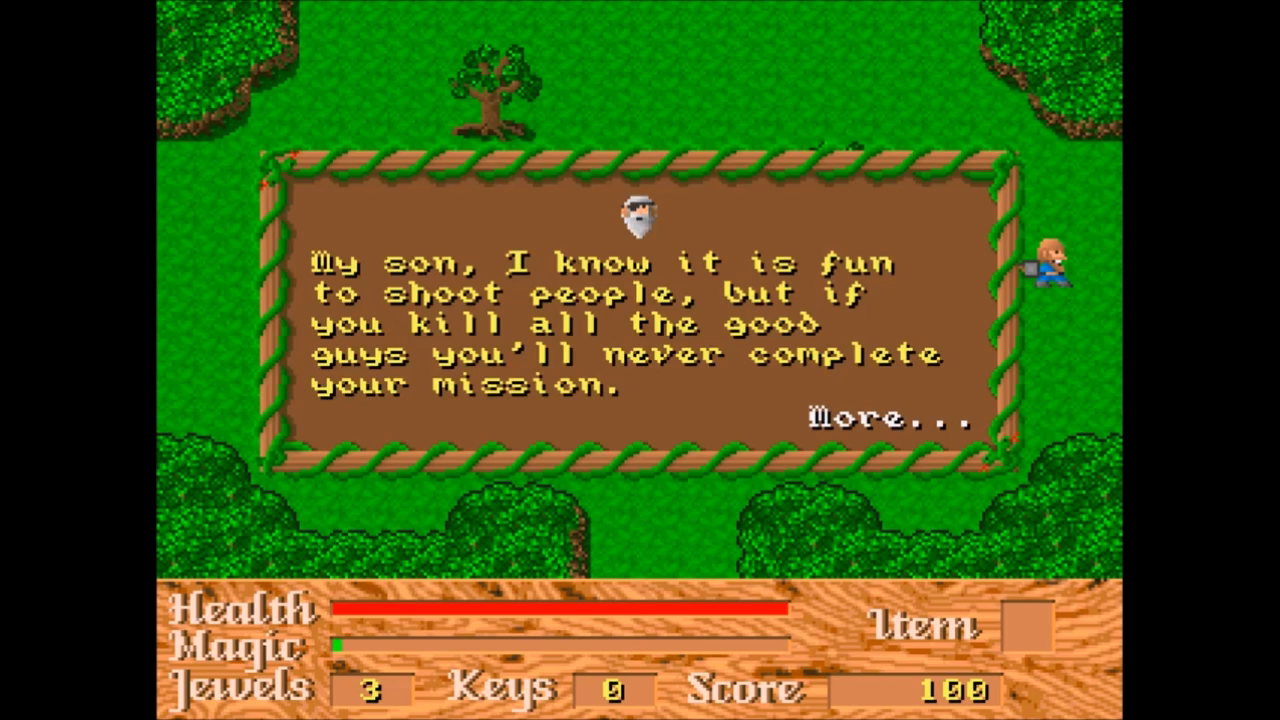
Humor is another huge part of God of Thunder and it goes hand-in-hand with the puzzle elements. NPC dialogue is cheesy 90’s humor at its finest and it’s on full display within the towns. Each of the three Parts has a town in it and each town in turn serves as a sort of large puzzle. Towns are quite large and you’ll need to talk to plenty of NPC’s to figure out what you even need to do to progress.
Little things like the presence of a “TV and Bridge Repair Shop” and guards who will throw you in jail after being accused of saying “Booger” in public constantly made me smile while exploring these places and they go a long way towards giving each town a memorable sense of personality. You can even kill NPC’s to get some dialogue from an increasingly exasperated Odin. Killing NPC’s costs you a trivial amount of points and the NPC’s respawn when you leave the screen so you can never become stuck, yet another way in which this game is oddly forgiving for its time.
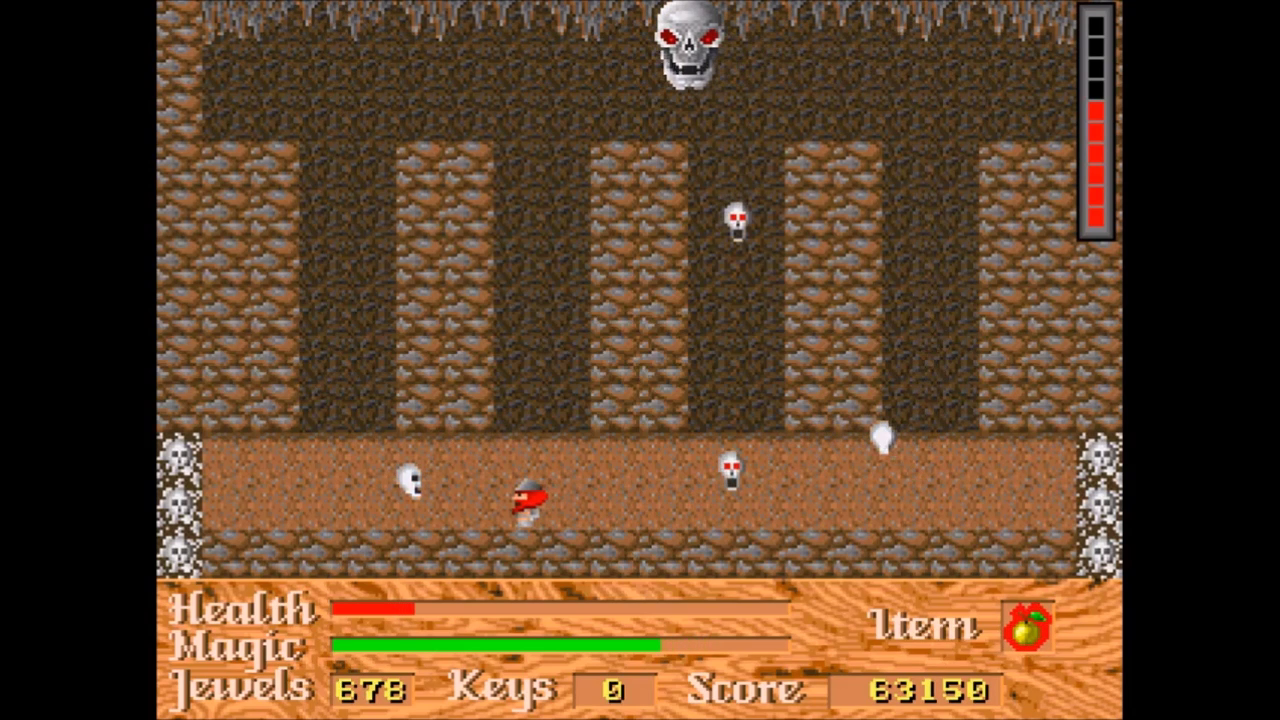
God of Thunder is a clunky and clumsy game in spots, mainly its combat, but it’s also clever and irresistibly charming. Its flexible nature usually works in favor of making the puzzles more interesting, the hammer serves as a creative tool in puzzles and combat alike, none of the grinding and overly harsh penalties common in its era are present here, and it refuses to ever take itself remotely seriously. This may be a forgotten classic, but its new presence on Steam serves as the perfect opportunity to go discover it for yourself.